| 1 | A 2.5 metre Caribbean boa |
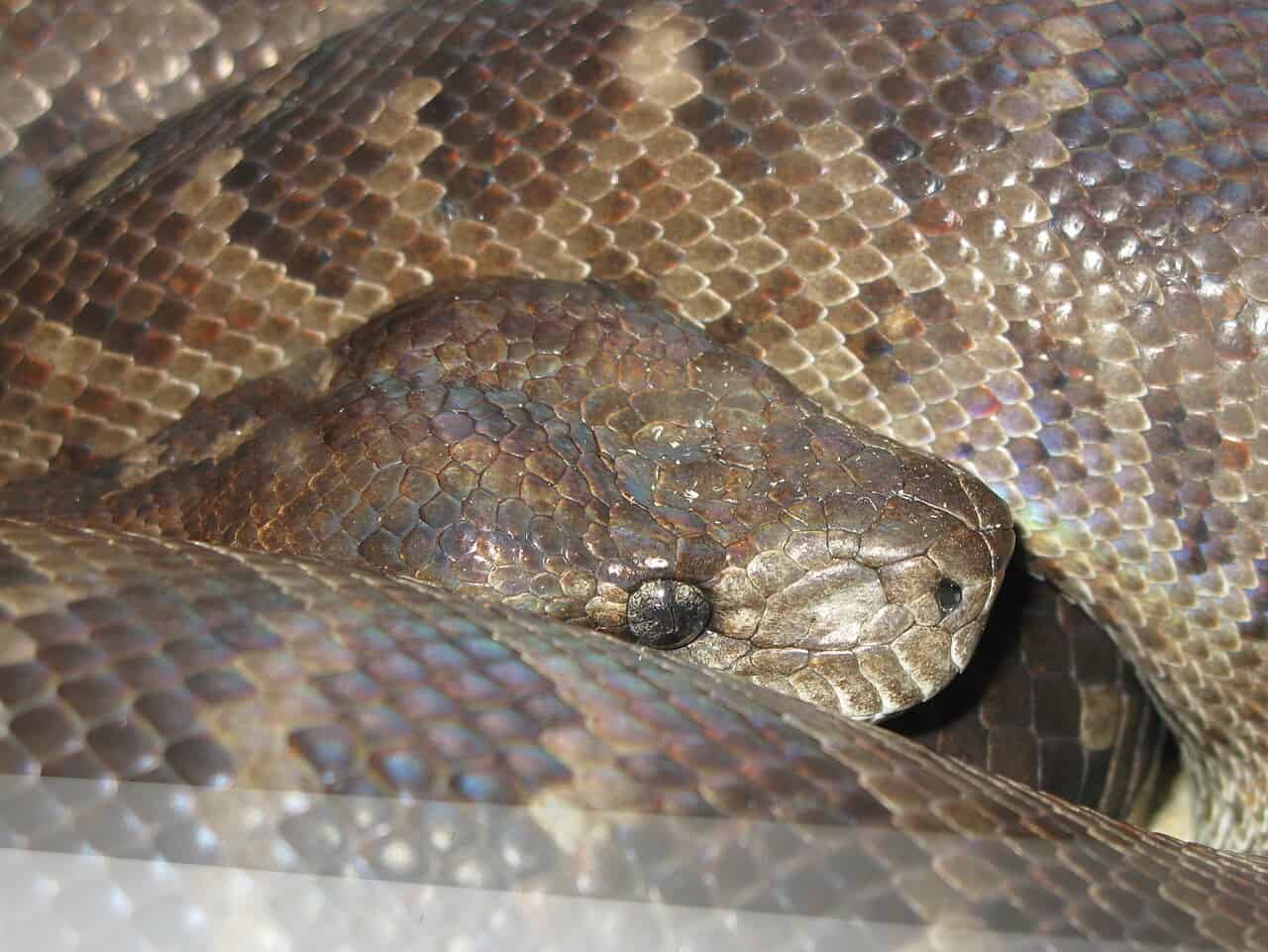
Hispaniola is the large Caribbean island containing Haiti in the western half, and the Dominican Republic in the east. European colonists arrived on the island in 1492, where they built La Navidad, one of the earliest forts of the New World. The colonists found a pristine oasis of forests, but something they also found was a large boa, measuring up to 2.4 metres. This was the Hispaniola boa (Chilabothrus striatus), a non-venomous constrictor with a hefty size, yet a docile personality.
This species belongs to the same Chilabothrus genus as Cuban boas or Puerto Rican boas. Like those species, it’s found exclusively on its namesake island, with no overseas outposts.
Hispaniola boas fail to match the Cuban boa for raw size, one of the largest snakes in the world, at a record of over 5 metres. But they’re still the largest snake on Hispaniola, with an average length of 150-230cm. One of the largest Hispaniola boas was discovered in 1974, and measured 248.9cm.
This is a medium thickness snake – hefty enough to constrict its prey, yet thin enough to glide across tree branches without them snapping. Hispaniola boas are missing from some locations, but they still manage to cover the island in a full west to east span. They’re most common in forested areas, whether sparse or dense, and prefer moist conditions to dry. Hispaniola boas can be found from 0 to 1200 metres above sea level.
| 2 | From grey to orange to red |
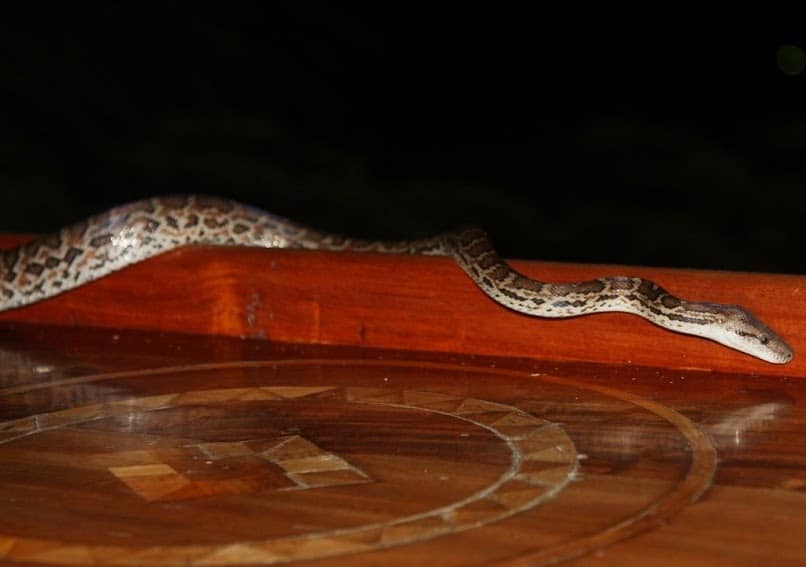
Of all the boas in the Caribbean neighbourhood, Hispaniola boas have the widest variety in colour. The most common morph is fairly dull. It has murky grey-brown colours, like a muddy lake, albeit one which you wouldn’t want to put your foot into. These are arranged in curving, uneven blotches, which vaguely form stripes on their sides. Meanwhile, their belly is far paler, which extends to their chin, giving them a paler face than the rest of their body.
However, others can be fully orange (see here), with only faint patterns. Another group have yellow and brown patterns closer to a giraffe. The black scales are sometimes more abundant than usual, squeezing out the pale scales to create a boa which would vanish easily into the blackness of night. Even their eyes are affected, varying from gold to black (always with a vertical pupil). Their tongue is generally black with a white tip.
Meanwhile, their cousin the Jamaican boa varies in colour, but sticks to their gold-black combo. It’s only the exact proportions of gold and black that vary, with one sometimes dominating the other. Puerto Rican boas are probably the dullest family member of all.
| 3 | The lava red morph |
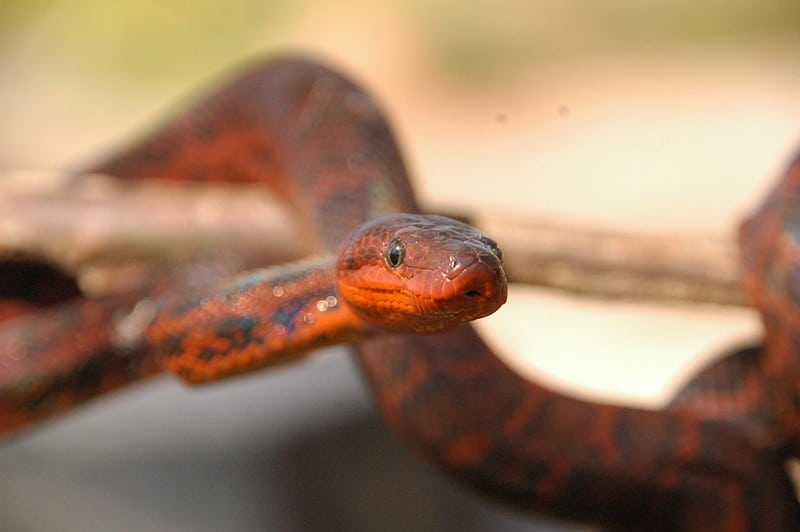
There’s one morph of Hispaniola boas which is undoubtedly the coolest: a reddish lava version which looks like it would sizzle your hand if you stroked it. This is an erythristic morph – where red pigments are overexpressed, essentially a red version of melanism.
Erythrism can be found in animals such as rabbits, and grasshoppers, which makes them completely pink. Surveys reveal that red Hispaniolan boas are more common in the east of Hispaniola, in the far reaches of the Dominican Republic. In an expedition to the island, locals described how these culebras colordas (red snakes) lived in local forests.
These boas retain their grey sections, contrasting against a magma red. Their ordinarily pale chin and belly are completely taken over by red. They were first documented in 1971, at which point three red Hispaniolan boas were known to western scientists. Two were found in El Seibo Province, and one in Sanchez Ramirez Province, and a later red version was found dead on a road. Many more have been found since then, and many international herpers dream of owning one (some fulfilling this dream).
| 4 | Means you no harm |
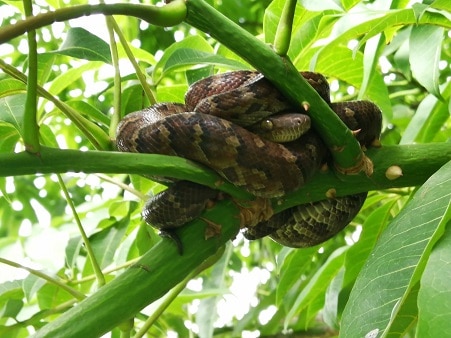
Hispaniola boas are a relatively timid snake. This isn’t true for all boas – Amazon tree boas can be vicious and bitey – but Hispaniola boas seem unaffected by human presence unless severely manhandled. Reports from captivity include neonates which are timid and docile, while occasionally growing snappy, as they grow used to the world around them. Like any species, unusually defensive and aggressive individuals can appear. But it’s rare for Hispaniola boas to bite, both in captivity and the wild.
Hispaniola boas do possess one weapon: a powerful musk scent which forces you to leave the vicinity. Adult Hispaniola boas rarely deploy these tactics, but can stink out an entire room when they do. The biggest problem is not knowing their own strength. This captive keeper reported that a 135cm Hispaniola boa almost broke his wife’s thumb, during its typical coiling manoeuvre when climbing.
In captivity, Hispaniola boas are more active and inquisitive at night, and more eager to feed. At day, they tend to be secretive, retreating to the shadows. Hispaniola boas are nocturnal in the wild too, though not 100% strictly.
| 5 | Diet: over 90% mammals |
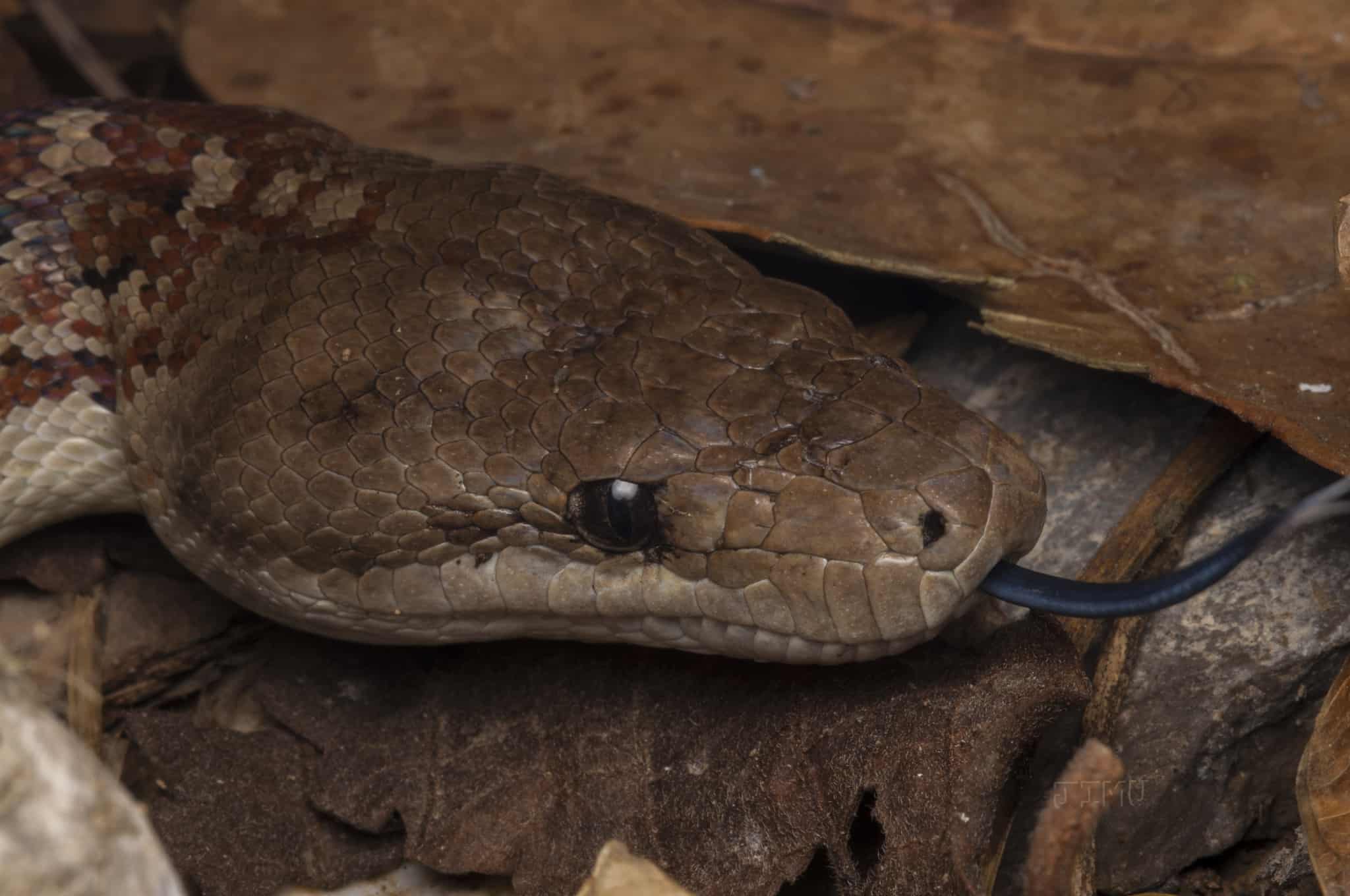
In 1987, a study gathered 133 Hispaniola boas and analysed their dietary makeup. The study confirmed 7 species…
Mammals – house mouse, black rat.
Reptiles – Hispaniolan stout anole, Hispaniolan green anole.
Birds – palmchat, Greater Antillean grackle, bananaquit.
Across the 133 Hispaniola boas, the breakdown was 92.7% mammals, 2.1% Anolis lizards, and 5.2% birds. The study found that boas below 60cm (excluding the tail) overwhelmingly feasted on anoles. At 60cm-80cm, they ate a mixture of mammals and anoles, while at over 80cm, they ate mainly mammals and some birds. At over 115cm, they ate mammals exclusively. None of these mammals were native; they were all introduced species, originally stowed on wooden ships from Europe.
Before European settlement, Hispaniola was home to several now extinct mammals, which the Hispaniola boa almost certainly fed on. These included the montane hutias, Puerto Rican hutias, and Hispaniola edible rat. The invaders have been so successful that the island Hispaniola now contains just two remaining endemic mammals: the Hispaniola hutia (Plagiodontia aedium) and Hispaniolan solenodon (Solenodon paradoxus). The island even had a native monkey, simply titled the Hispaniola monkey, which is now extinct.
| 6 | A crafty, cunning hunter |
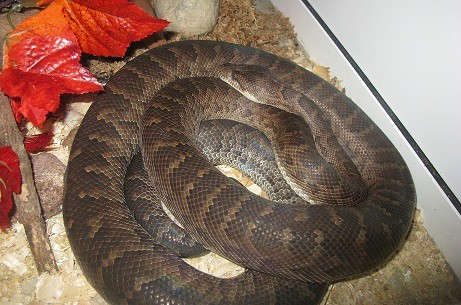
The Hispaniola boa is a flexible snake, hence why it has survived so long. The house mouse and black rat aren’t native to their lands, yet they eagerly gobble them up, so that they comprise the vast majority of their diet as adults. It’s thought that they had mostly switched to invasive mammals by the early 20th century. That said, they’re still found with the native Hispaniolan hutia in their stomach occasionally.
Hispaniola boas aren’t inflexible and stuck in their ways. They can adapt their diet to rare, one in a lifetime scenarios. One unfortunate incident happened at the National Zoo, in Santo Domingo (Dominican Republic). The zoo hosted a large free flight aviary, a huge enclosure covered with mere netting, where numerous bird species could fly around freely, and tourists could walk through and gaze in wonder. Unfortunately, the local Hispaniola boas noticed this hive of squawking and flapping. Circumventing the defences, they swallowed at least 10 birds over the course of a few months in 1989.
Hispaniola boas are able to home in on an easily available food source and exploit it. A more dimwitted snake might have passed up the opportunity, but not Chilabothrus striatus. It’s thought that these zoo invaders were just a few crafty individuals repeatedly returning.
| 7 | Gulps down huge meals |
Chilabothrus striatus was also greedy when it came to prey size. Their meals came in a mean length of 66.7cm, +/- 12cm. Another Chilabothrus family member tested was the Haitian vine boa, and this ate an average prey size of just 2.4cm.
Haitian vine boas are shorter (80cm versus 2 metres), but this prey size was disproportionately smaller. This species lives in Hispaniola alongside Chilabothrus stratius, including both Haiti and the Dominican Republic. Somehow, the two species manage to coexist, and this diet difference is probably why, allowing the two to separate into their own non-competitive niches. Compared to Hispaniola boas, Haitian vine boas eat virtually no mammals, even refusing pinkie mice in captivity. They eat reptiles almost exclusively, particularly Hispaniolan stout anole and Hispaniolan gracile anole.
The third species tested was Chilabothrus fordii, the Haitian ground boa. This species ate a mixture of anoles and mammals as adults, making it a halfway house between its neighbours. Of the three boas, Hispaniolan boas ate the largest anoles with ease. It ate the same species, but chose the largest anoles within each species.
| 8 | Combines ambush and foraging |
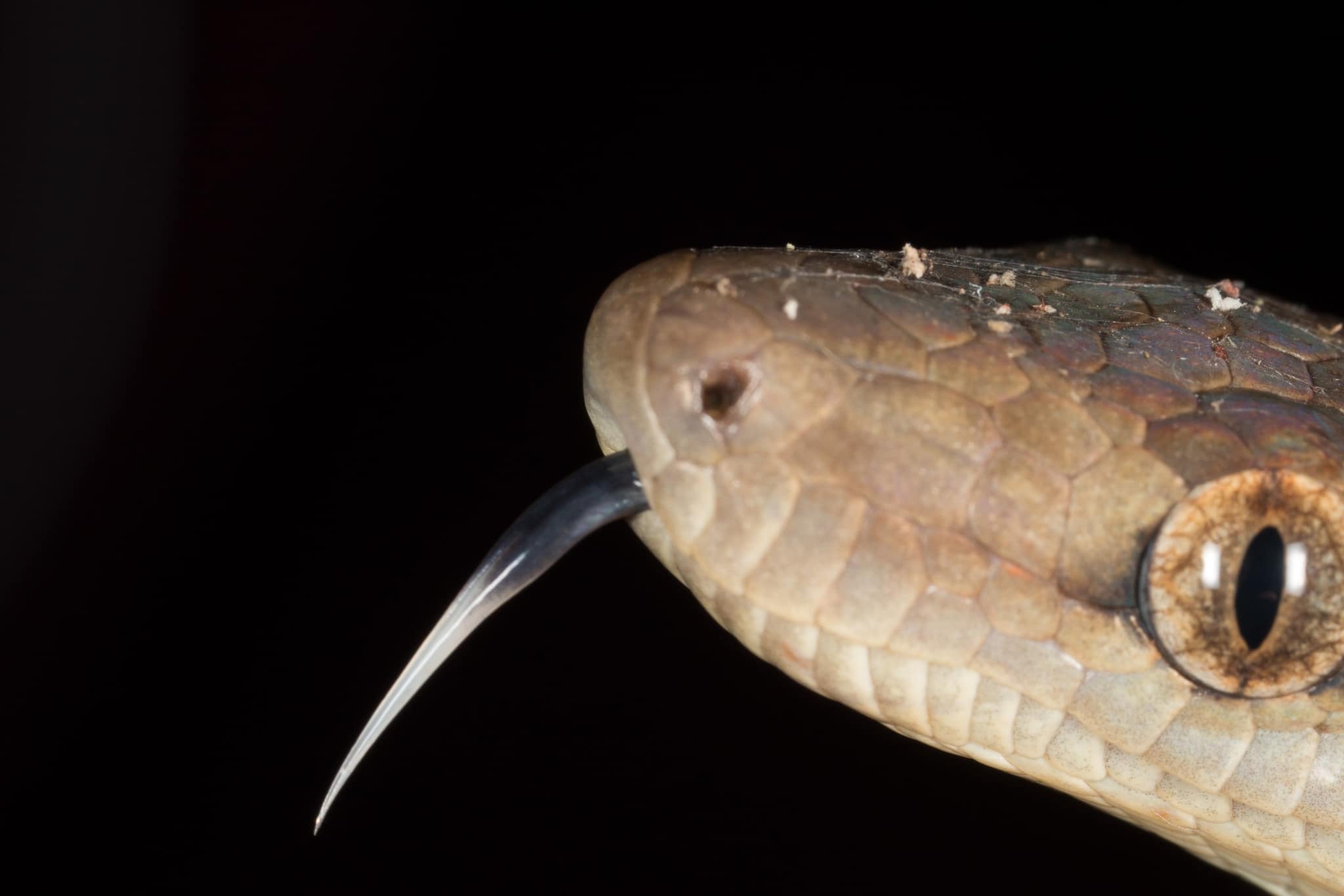
Hispaniolan boas have an expert sense of balance, and can thread along a narrow piece of vegetation like a tightrope walker. Not only do they not fall, but the idea of falling is inconceivable.
Hispaniola boas can be found coiled in limestone crevices, birds’ nests, hollows in tree trunks. They love to coil on lower branches which are in the shade of thickly vegetated higher branches. They also coil up in manmade structures like the straw roofs of huts. They can reach towering heights, with the highest observation above ground being 20 metres.
Hispaniola boas use a hybrid hunting strategy. As youngsters, during their anole phase, they curiously investigate branches to search for anoles while they sleep. They fleck their tongues constantly, and are active and alert. As adults, they shift towards ambush tactics, coiling around a branch in wait. But they still forage actively at times, and will slither towards wherever an irresistible scent takes them (like during the zoo raid).
| 9 | Still thriving in the wild |
Chilabothrus striatus has a conservation rating of “Least concern” by IUCN. Hispaniola is hardly crawling with them, but they maintain healthy colonies in their forests, particularly in the eastern half of the island, controlled by the Dominican Republic. The population is stable, and they also appear in several protected areas.
In Haiti, it’s another story. This is one of the most impoverished nations on Earth, due to a mixture of dictatorships, hurricanes, and the catastrophic 2010 earthquake. With the people desperate for any income, deforestation is rife. In fact, it’s easy to see the border with the Dominican Republic in satellite imagery based purely on the forest cover. As a forest species, this seems like a recipe for Chilabothrus striatus’ demise, yet they’re clinging on in Haiti better than once feared.
Hispaniola boas cope surprisingly well with urban areas, and have been found living in the hollow trunks of large dead trees, near streets or even in gardens. Hispaniola boas often slither through houses in pursuit of rats. Rather than fearful, local attitudes to Hispaniola boas are friendly. Many Haitians keep them in their houses as watchful spirits, the embodiment of invisible creatures called Jinn. Supposedly, their numbers are now underestimated, because Haitians are reluctant to show their friendly household boas to outsiders.
| 10 | Ancient origins |
Cuban boas and Puerto Rican boas are two of the most heavily bat-eating snakes on earth. They lurk in cool, dripping caves, and even dangle from ceilings to ambush bat colonies as they fly out at night. Meanwhile, their Chilabothrus cousin the Hispaniola boa will only eat bats very occasionally, similarly to the Jamaican boa. The 1987 diet study from earlier found zero bats, and only a single photograph of one eating a bat has even been taken.
Over a century ago, Hispaniola boas were filed as a subspecies of the Cuban boa. This couldn’t have been more wrong, as recent genetic analysis led to an estimate that the two species 16.9-26 million years ago.
Meanwhile, Hispaniola boas have separated from their neighbours more recently, but still a long time ago. They’re part of a subgroup containing 3 additional species: the northern Bahama boa, the Crooked Aklins boa, and the silver coloured Conception Bank boa. These species diverged 2.2 million years ago, while the likes of Puerto Rican boas are a more distant relative.
